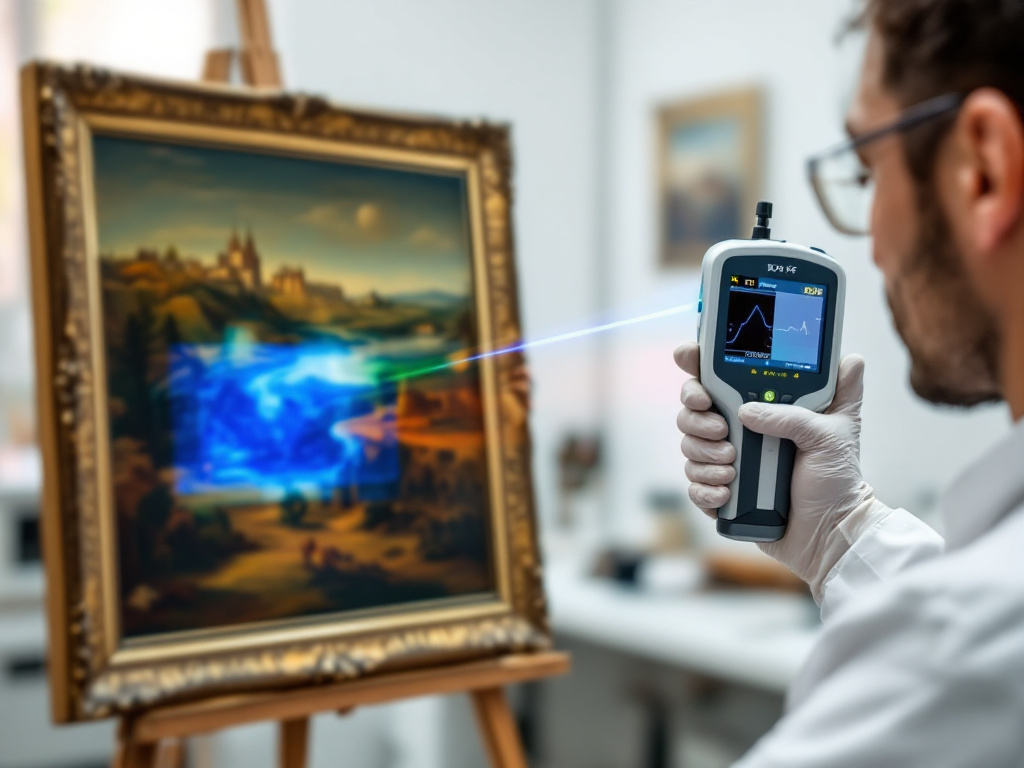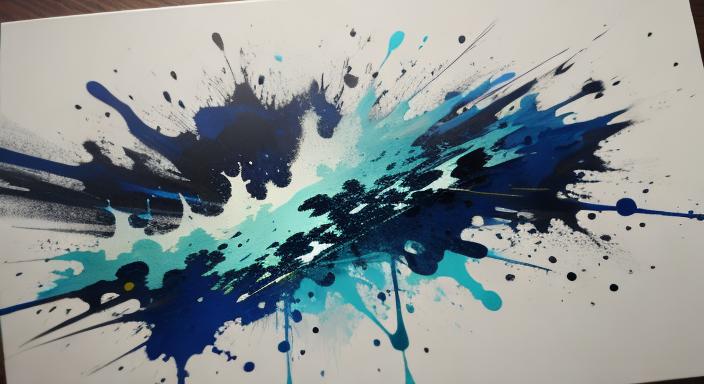Authenticating artwork is essential for preserving the integrity and value of paintings. As the art market evolves, the need for reliable authentication methods becomes increasingly important. This article explores the scientific techniques used to detect forgeries in paintings, offering a comprehensive guide for experts and enthusiasts alike.
Key Takeaways
- Scientific methods like X-ray Fluorescence (XRF) and Infrared Reflectography are vital for authenticating artwork.
- Provenance research and forensic art analysis are crucial in uncovering a painting’s true origins.
- Collaboration with institutions like the FBI Art Crime Team and The Getty Conservation Institute is essential for successful authentication.
- High-profile cases, such as the Van Meegeren Forgeries and the Knoedler Gallery Scandal, underscore the importance of rigorous authentication processes.
Understanding Art Forgery
Art forgery involves creating or altering artwork to deceive buyers into believing it is authentic. Throughout history, famous forgers have used various techniques to mimic the styles of renowned artists. These forgeries not only devalue the art market but also undermine cultural heritage.
- Famous Forgers:
- Han van Meegeren: Known for his fake Vermeers.
- Wolfgang Beltracchi: Mimicked Expressionist artists.
- Elmyr de Hory: Forged works by Matisse, Modigliani, and others.
- Impact on the Art Market:
- Forgeries can inflate prices and damage the reputations of artists and galleries.
- They also erode trust between buyers and sellers in the art market.
X-ray Fluorescence (XRF)
X-ray Fluorescence (XRF) is a non-destructive technique used to analyze pigments in paintings. By identifying the chemical elements present, XRF can determine the age and authenticity of a painting.
- How XRF Works:
- XRF uses X-rays to excite atoms in a sample, causing them to emit characteristic “secondary” X-rays.
- These X-rays are analyzed to identify the elements present.
- Case Studies:
- XRF has authenticated works by artists like Rembrandt and Vermeer.
- It has also uncovered forgeries by detecting anachronistic pigments.

Infrared Reflectography

Infrared Reflectography uses infrared light to detect underdrawings and alterations in paintings. This method is particularly useful for revealing hidden details not visible to the naked eye.
- How It Works:
- Infrared light penetrates the surface layers of a painting, revealing the underlying drawings.
- These drawings can provide clues about the painting’s authenticity.
- Examples:
- Infrared Reflectography has authenticated works by Leonardo da Vinci and other Renaissance artists.
- It has also exposed forgeries by revealing inconsistencies in the underdrawings.
Provenance Research
Provenance research involves tracking the ownership history of a painting to verify its authenticity. This process can uncover gaps or inconsistencies that may indicate a forgery.
- Methods:
- Researching auction records, gallery catalogs, and private collections.
- Interviewing previous owners and experts.
- Real-Life Examples:
- Provenance research uncovered the forgeries in the Knoedler Gallery Scandal.
- It has also authenticated works by artists like Picasso and Monet.
Microchemical Testing
Microchemical testing involves lab analysis of paint samples to determine their age and authenticity. This method can detect anachronistic materials that would not have been available to the original artist.
- Techniques:
- Chemical analysis of pigments and binders.
- Dating of materials using radiocarbon dating.
- Success Stories:
- Microchemical testing has authenticated works by artists like Van Gogh and Rembrandt.
- It has also exposed forgeries by detecting modern materials in supposedly old paintings.
Forensic Art Analysis

Forensic art analysis uses scientific methods to examine the physical characteristics of a painting. This includes analyzing brushstrokes, canvas fibers, and varnish layers.
- Role of Forensic Scientists:
- Forensic scientists use microscopes, chemical tests, and other tools to examine paintings.
- They look for signs of aging, wear, and other indicators of authenticity.
- Case Studies:
- Forensic art analysis has authenticated works by artists like Jackson Pollock and Mark Rothko.
- It has also exposed forgeries by detecting inconsistencies in the painting’s physical characteristics.
Carbon Dating in Paintings
Carbon dating is a method used to determine the age of organic materials in a painting. This can help authenticate a painting by confirming that the materials used are from the correct time period.
- How Carbon Dating Works:
- Carbon dating measures the amount of carbon-14 in a sample to determine its age.
- This method is particularly useful for dating organic materials like canvas and wood.
- Examples:
- Carbon dating has authenticated works by artists like Leonardo da Vinci and Rembrandt.
- It has also exposed forgeries by revealing that the materials used are too new.
Stylometric Software (AI for Style Analysis)
Stylometric software uses AI to analyze the style of a painting. This method can detect inconsistencies that may indicate a forgery.
- How AI Helps:
- AI can analyze brushstrokes, color usage, and other stylistic elements.
- It can compare these elements to known works by the artist to detect anomalies.
- Future of AI in Art Authentication:
- AI is becoming increasingly important in art authentication.
- It can provide quick and accurate analyses that complement traditional methods.
High-Profile Forgery Cases
High-profile forgery cases highlight the importance of rigorous authentication processes. These cases have had significant impacts on the art market and cultural heritage.
- Van Meegeren Forgeries:
- Han van Meegeren created fake Vermeers that fooled experts for years.
- His forgeries were eventually exposed using scientific methods.
- Knoedler Gallery Scandal:
- The Knoedler Gallery sold fake Rothkos and other forgeries for millions of dollars.
- The scandal was uncovered through a combination of provenance research and forensic art analysis.
- Other Notable Cases:
- The Beltracchi forgeries involved mimicking Expressionist artists.
- The forgeries were exposed using a combination of scientific methods and expert analysis.
Role of Institutions in Art Authentication
Institutions play a crucial role in art authentication. They provide the expertise and resources needed to detect forgeries and authenticate artwork.
- FBI Art Crime Team:
- The FBI Art Crime Team specializes in investigating art forgeries and thefts.
- They use a combination of scientific methods and expert analysis to authenticate artwork.
- The Getty Conservation Institute:
- The Getty Conservation Institute is a leader in art authentication research.
- They develop new methods and technologies for detecting forgeries.
- Other Organizations:
- The British Art Market Federation (BAMF) advocates for art fraud prevention.
- Other institutions like museums and universities also contribute to art authentication research.
Art Market Fraud Prevention
Preventing art fraud is essential for maintaining the integrity of the art market. There are several strategies that can help prevent fraud and ensure the authenticity of artwork.
- Strategies for Prevention:
- Conducting thorough provenance research before purchasing artwork.
- Using scientific methods to authenticate paintings.
- Collaborating with experts and institutions to verify authenticity.
- Role of Auction Houses and Galleries:
- Auction houses and galleries play a crucial role in due diligence.
- They should conduct thorough research and use scientific methods to authenticate artwork before selling it.
- Tips for Collectors:
- Always ask for provenance documentation.
- Use scientific methods to authenticate paintings.
- Consult with experts before making a purchase.
Interactive Quiz: Test Your Knowledge on Art Authentication
Which method is used to analyze pigments in paintings without damaging the artwork?
What technique is particularly useful for revealing hidden underdrawings in paintings?
Which method involves lab analysis of paint samples to determine their age?
Which scientific method uses AI to analyze the style of a painting?
What is the primary purpose of carbon dating in art authentication?
Which method is used to examine the physical characteristics of a painting, such as brushstrokes and canvas fibers?
Conclusion
Authenticating artwork is a complex process that requires a combination of scientific methods and expert analysis. By using techniques like XRF, Infrared Reflectography, and microchemical testing, experts can detect forgeries and ensure the authenticity of paintings. Collaboration with institutions like the FBI Art Crime Team and The Getty Conservation Institute is essential for successful authentication. As the art market continues to evolve, the need for robust authentication methods will only grow. By staying vigilant and using the latest technologies, we can protect the integrity of the art market and preserve our cultural heritage.
Frequently Asked Questions (FAQs)
What are the most common signs of a forged painting?
- Inconsistencies in style, anachronistic materials, and gaps in provenance are common signs of a forged painting.
How can I authenticate a painting myself?
- You can use scientific methods like XRF and Infrared Reflectography, conduct provenance research, and consult with experts.
What should I do if I suspect a painting is a forgery?
- Contact the FBI Art Crime Team or another expert in art authentication.
How do scientific methods ensure the authenticity of a painting?
- Scientific methods provide objective evidence of a painting’s age and authenticity.
What are the legal implications of owning a forged painting?
- Owning a forged painting can lead to legal issues, including fraud charges and loss of value.
Discover more:
- For more information on the techniques used in art authentication, check out our guide on Using AI Tools to Analyze Artwork.
- To learn about the historical significance of art forgeries, read about the Famous Painting Mistakes That Turned into Masterpieces.
- For a deeper dive into the world of art authentication, explore our article on Unlock the Mystery: A Step-by-Step Guide to Identifying Unknown Artists and Paintings.


